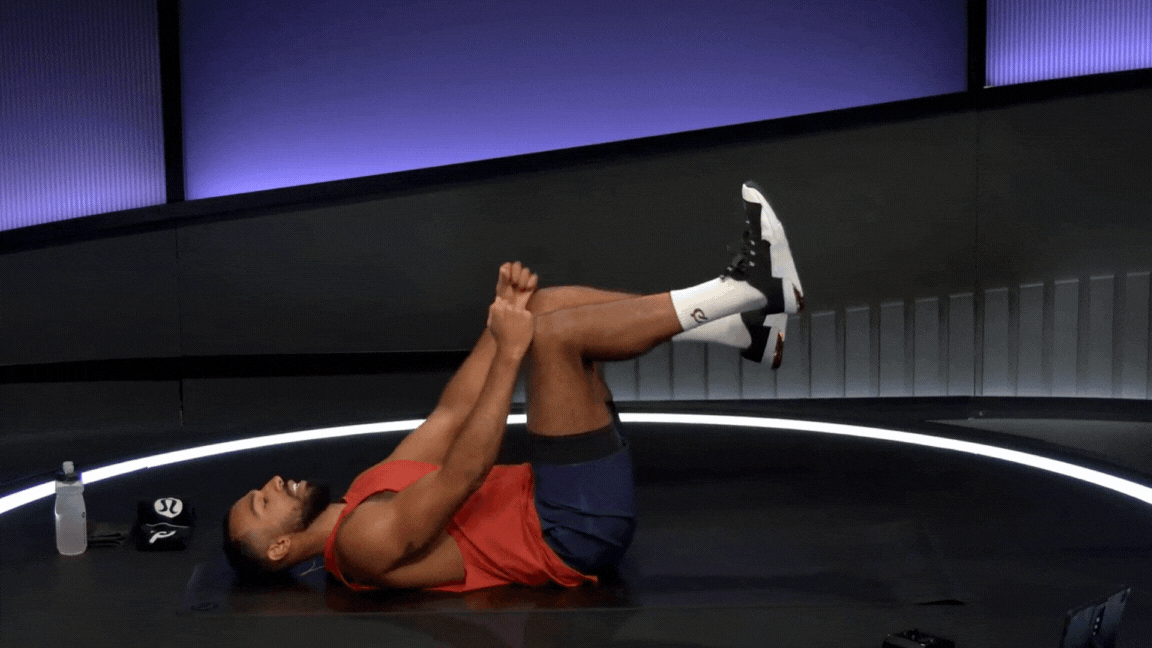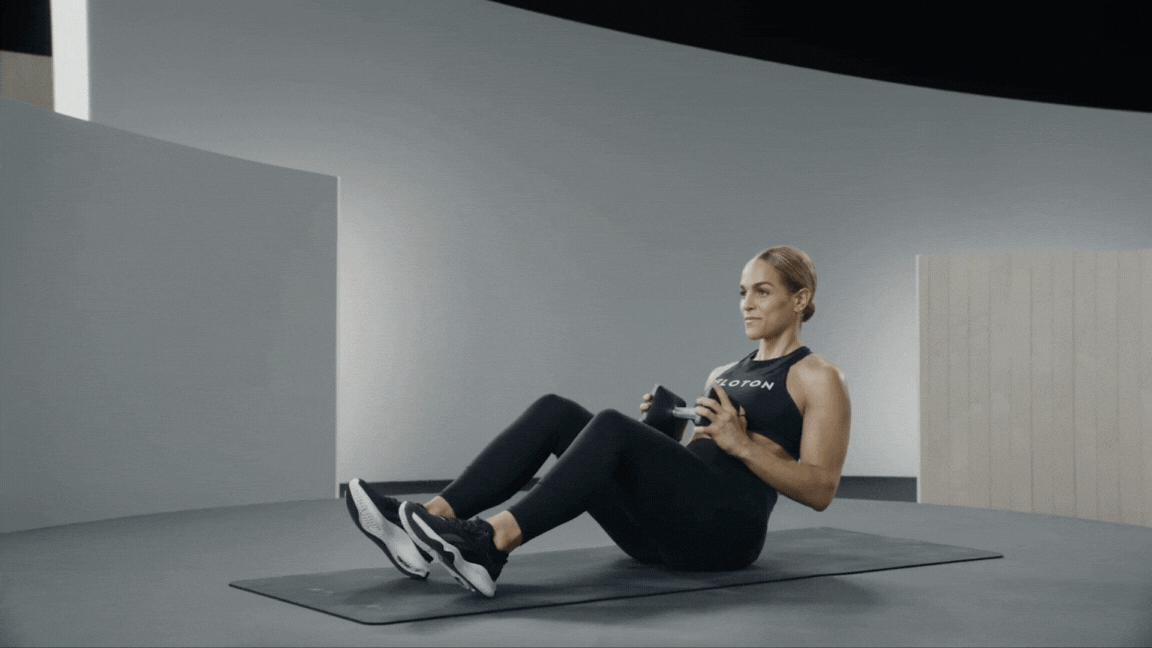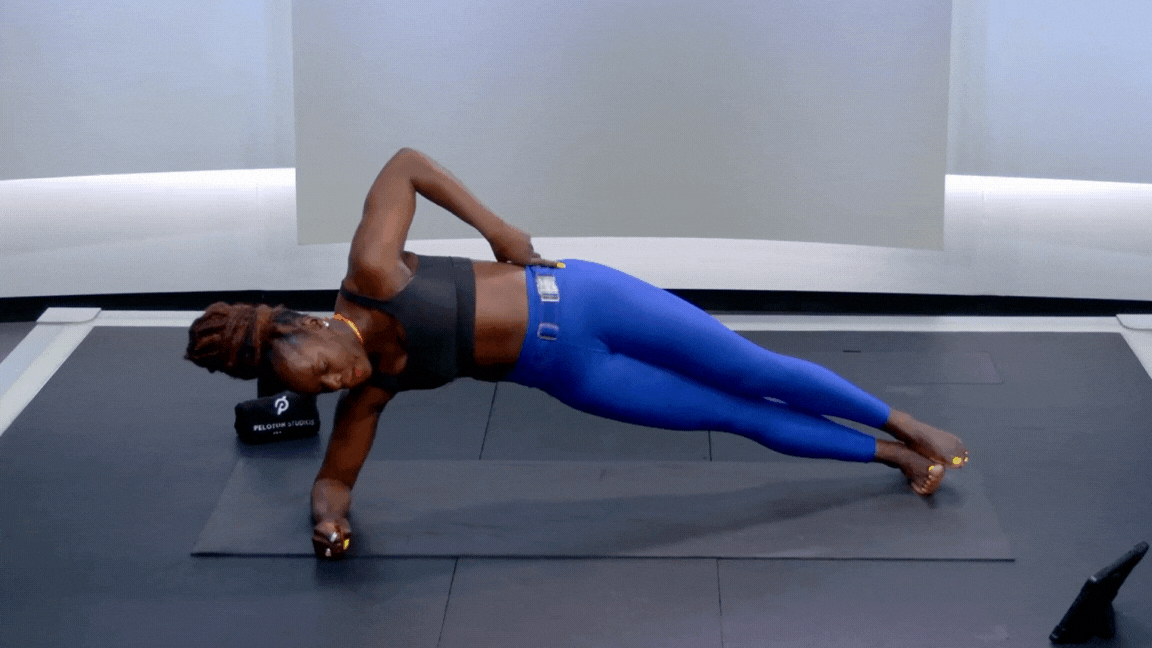
Nastasic/Getty Images
7 Beginner-Friendly Exercises to Target Your Core from All Angles
No equipment needed.
By Rozalynn S. Frazier•
Why Should Beginners Do Core Exercises?
What Muscles Do Core Exercises Work?
7 Best Core Exercises for Beginners
Tips for Doing Beginner Core Exercises
How Often Should Beginners Do Core Exercises?
Have you ever tacked on a couple of sit-ups to the front or back end of what you consider your “real workout” and called it a day? Beginner or not, viewing core exercises as an afterthought can keep you from reaching your full fitness potential. So, how do you actually start prioritizing your core and building serious strength?
We asked experts, including Peloton instructor Emma Lovewell, to break down the different muscles in this area of your body, explain why they’re so important to exercise, and share their favorite core exercises for beginners.
Why Should Beginners Do Core Exercises?
We could go on and on about the benefits (both fitness-related and not) of having a strong core for athletes of all levels, but for starters, it helps protect you from getting injured and improves your overall mobility, whether you’re pushing yourself in a Peloton class or lugging heavy grocery bags up a flight of stairs. As an added bonus, strength training—and yes, shoring up your core counts—can have a positive effect on your mental health and relieve stress by boosting your endorphins.
And if you don’t work on your core, Emma says it can lead to a range of issues such as poor posture, balance, and stability. You may also feel fatigued sooner during physical activities and experience a limited range of motion in your spine. After all, your body can overcompensate for a weak core by putting too much pressure on other areas (typically your back), resulting in discomfort or even pain. Keep in mind: Your core connects your upper and lower body. So if your lower body is strong but your core is weak, you probably won’t be able to effectively transfer force to your upper body, says Cameron Yuen, a physical therapist and the director of rehab and training at Bespoke Treatments.

Peloton App
Access thousands of classes with no equipment needed.
What Muscles Do Core Exercises Work?
Your core “can be thought of as all of the muscles that attach to or control movement at the spine,” Yuen says. Some of the main muscles include:
Your rectus abdominis, which run vertically along the front of your abdomen and help you bend forward.
Your obliques, which run diagonally on either side of your abdomen from your ribs to your hips and “assist with twisting and bending to the side,” according to Emma.
Your transverse abdominis, or deep core muscles, which Emma says “provides stability and support for your spine and organs.”
Your erector spinae, which runs along the spine and helps with spinal extension and rotation.
Your multifidus, which also runs along the spine and helps ensure spinal stability and alignment.
Yuen notes that your core also includes deeper muscles, such as your pelvic floor and diaphragm. When these muscles all work together in harmony, you increase your strength, power, endurance, and efficiency, according to Yuen.
7 Best Core Exercises for Beginners
Ready to train your core? Emma suggests doing these seven beginner-friendly exercises to get started.

1. Plank
This isometric exercise challenges your whole body, but particularly your rectus abdominis and transverse abdominis. You’ll feel it in the muscles in your shoulders, quads, and glutes too.
Start in a push-up position with your hands under your shoulders.
Engage your core and hold your body in a straight line from your head to your heels, keeping your abs tight and avoiding any sagging or arching.
Hold this position for 30-60 seconds.

2. Bird Dog
This move strengthens your core, improves stability, and promotes proper posture.
Begin on all fours with your wrists under your shoulders and your knees under your hips.
Extend your right arm forward and your left leg back, maintaining a neutral spine.
Hold this position for a few seconds before switching sides.
Repeat eight to 10 times on each side.

3. Dead Bug
More dynamic than a plank, dead bug requires you to simultaneously move opposite sides of your body. It targets multiple muscles, including your transverse abdominis, rectus abdominis, obliques, hip flexors, shoulders, and back.
Lie on your back with your arms extended toward the ceiling and your knees bent at a 90-degree angle.
Slowly lower your right arm and left leg towards the floor, keeping your lower back pressed into the ground.
Return to the starting position and repeat on the opposite side.
Repeat 10-12 times on each side.

4. Bicycle Crunch
Why is this dynamic move one of Emma's go-to core exercises? It strengthens your trunk in addition to building coordination, stability, and flexibility.
Lie on your back with your hands behind your head and your knees bent.
Lift your shoulder blades off the ground and bring your right elbow towards your left knee while straightening your right leg.
Switch sides in a fluid motion, like you’re pedaling a bicycle.
Continue alternating until you've completed 12-15 reps on each side.

5. Russian Twist
To properly do this move, you use your rectus abdominis and obliques, which are often neglected in traditional ab exercises.
Sit on the ground with your knees bent and your feet flat on the floor.
Lean back slightly and lift your feet off the ground a few inches so you’re balancing on your butt. You can also keep your feet on the ground for additional support.
Hold a weight at your chest and rotate your torso to one side, tapping the weight on the ground next to your hip before twisting to the opposite side.
Do 12-15 total reps.

6. Side Plank
Side planks challenge your balance and work your obliques. Even if you modify it by dropping your knee for added support, you’ll still get plenty of benefits.
Start in a side plank position with your elbow directly under your shoulder and your feet stacked. If this is too challenging, drop your bottom knee to the ground for added stability.
Hold this position for 30-45 seconds on each side.

7. Mountain Climbers
This exercise involves multiple areas of your body, including your shoulders, core, and legs. What’s more, it packs a cardio burst.
Begin in a high plank position.
Engage your core and bring your right knee toward your chest. Then, quickly switch legs, bringing your left knee toward your chest.
Continue alternating your legs at a quick pace for 30-60 seconds.
Tips for Doing Beginner Core Exercises
If you’re new to core exercises or strength training in general, it’s important to ease into a routine to avoid injuring yourself. Keep these tips in mind as you get started.
Start with static exercises before moving to dynamic exercises. Static core exercises, such as planks, help you activate muscles in a stationary position. Although these movements still improve your stability and stamina, they’re less intense and more beginner-friendly than dynamic core exercises, such as mountain climbers and plank rotations. Over time, you can work up to these more active movements.
Focus on activating the correct muscles in each exercise. Firing up the right muscles helps you achieve greater strength gains and maintain proper form. “The activation and the strength of these muscles to control the spine is important for injury prevention, fitness, and performance,” Yuen says.
Maintain a neutral spine position. A neutral stance places the least amount of stress on your back, and Yuen says it’s where “we learn to stabilize the spine.”
Incorporate exercises that challenge different planes of motion. Moving in all three planes of motion—sagittal, frontal, and rotational—encourages a well-balanced core, which is important because imbalances can lead to overcompensation and injuries. “In the sagittal plane, the spine flexes and extends. Classic exercises like sit-ups and planks will target the rectus abdominis to create or resist this motion. In the frontal plane, the obliques control the side bending of the spine. Exercises like side bends will develop these muscles. For rotation and antirotation, exercises like bicycle crunches and anti–rotation cable presses work well," Yuen says.
Don't forget to do exercises that strengthen your lower back. People often overlook the fact that their lower back is part of their core, which is why the muscles in that area are typically underdeveloped. But according to Yuen, it’s extremely important that you include movements that strengthen them, as they support your entire spine and can improve your posture.
How Often Should Beginners Do Core Exercises?
Because the muscles in your midsection are so important, Emma suggests beginners do 10-15 minutes of core exercises between two and five times per week. “Listen to your body and adjust as needed,” she adds. Emma also says zeroing in on your transverse abdominals and obliques is “crucial for overall core stability and injury prevention.”
That said, you should avoid overtraining. “Like with any exercise, balance is key. While it's important to strengthen your core regularly, overdoing it can lead to muscle fatigue, overuse injuries, and imbalances,” Emma says. “Make sure to incorporate a variety of moves into your workouts and listen to your body's cues. And remember, your core muscles also get worked during compound movements like squats, deadlifts, and lunges, so mix it up.”
This content is for informational and educational purposes only and does not constitute individualized advice. It is not intended to replace professional medical evaluation, diagnosis, or treatment. Seek the advice of your physician for questions you may have regarding your health or a medical condition. If you are having a medical emergency, call your physician or 911 immediately.
Read More

Sculpt
10 Key Benefits of Strengthening Your Core (Because It's So Much More Than Your Abs)

Strength Train
How to Safely Work Your Core After Pregnancy—Plus Why It's So Important

Strength Train
This Plank Variation Challenges Your Entire Body

Strength Train
7 Stability Exercises to Help You Build Functional Strength
This content is for informational and educational purposes only and does not constitute individualized advice. It is not intended to replace professional medical evaluation, diagnosis, or treatment. Seek the advice of your physician for questions you may have regarding your health or a medical condition. If you are having a medical emergency, call your physician or 911 immediately.

Featured Peloton Instructor
Emma Lovewell
Emma has spent much of her career in fitness and wellness as a professional dancer, dance coach, fitness model, personal trainer, and Pilates instructor.
Move your fitness journey forward
Enter your email to get articles, motivating tips, and updates from Peloton sent to your inbox.
By providing your email address, you agree to receive marketing communications from Peloton.
For more about how we use your information, see our Privacy Policy.





